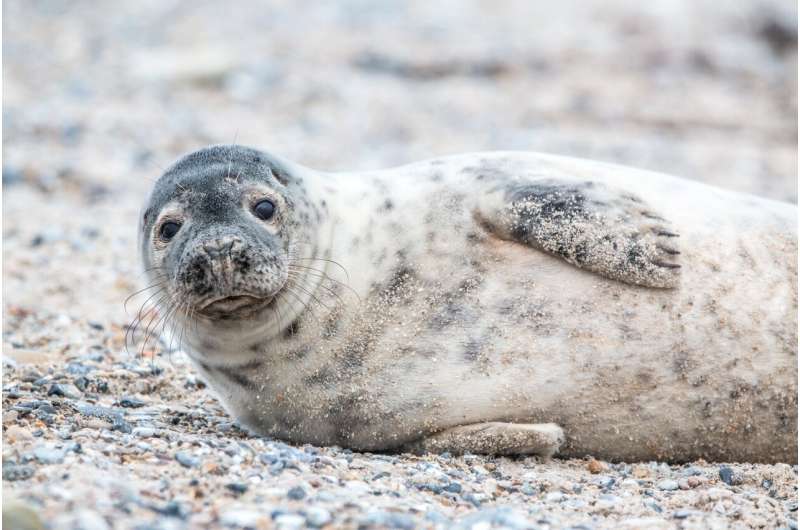Credit: Pixabay/CC0 Public Domain
Mitigation of seal-fishery conflict requires a broad knowledge base and better understanding between key stakeholders, particularly between the coastal fisheries sector and conservation organizations. A new report from Finland supports the development of a seal management plan covering the Baltic Sea.
The conflict between seal, conservation interests and fisheries in the Baltic Sea threatens the existence of coastal fishing activities. "Coastal fishers have experienced increasing challenges. Therefore, it is critical that the situation would find its balance," Senior Scientist Kristina Svels from Natural Resources Institute Finland says. Damage caused by the gray seal, the most common seal species in the Baltic Sea, have increased drastically in recent decades with the growth of the seal population causing significant catch losses, gear damage and various types of hidden damages and losses.
Reconciliation of the seal-fishery conflict requires a wide range of governance actions and the political will to implement them. At the heart of this reconciliation is the acceptability and legitimacy of different means and solutions for conflict mitigation. In the Regional solutions for mitigating seal-fishery conflict in the Baltic Sea—Interdisciplinary synthesis (RESOCO) project, the usefulness of existing and emerging seal conflict mitigation and management tools is classified into four groups:
- Technical solutions for reducing seal-induced catch and gear damage.
- Management strategies that affect the behavior and abundance of seals
- Economic measures to support the capacity of fisheries to survive
- The role of governance and institutions
Effective solutions also require deeper political will and wider stakeholder collaboration grounded in stable and forward-looking coordination and research-based knowledge about the means adopted. Special attention must be given to the involvement of local knowledge and active stakeholder participation by fishers, fish farmers, coastal inhabitants, and environmental organizations. The report suggests developing and revising local, regional, national and international management plans and demonstrating the consequences of the EU ban for seal products and providing material supporting regional opening for possibilities to use the seal as a natural resource.
Baltic-wide solutions are needed
Progress requires solutions and measures across the Baltic Sea. Baltic Sea states and regional authorities should promote wide dialogue and mutual understanding to find sustainable solutions. International coordination, co-operation, and the exchange of best practices between the Baltic Sea countries are prerequisites to success in mitigating the conflict. The report supports the development of a seal management plan covering the Baltic Sea.
This study has created a coherent knowledge base of various measures and practices available in the Baltic Sea and brings together knowledge of possibilities to revise regulations and co-develop fishing and hunting methods and new gear for coastal fisheries. Lately, acoustic harassment devices have become promising means for keeping the seals away from the fishing gear, creating seal-free areas where possible.
The outcome of the synthesis is based on a wide range of material, including reports from various projects, scientific publications, and interviews with key stakeholders. The synthesis includes examples of real-life cases in the mitigation of seal-fishery conflict from Finland, Åland Islands, Sweden, Denmark, and Estonia.
More information: Mitigating a social conflict between seal, conservation and fisheries in the Baltic Sea: multilevel and synergistic approaches. pub.norden.org/temanord2022-569/#
Provided by Natural Resources Institute Finland (Luke)
























